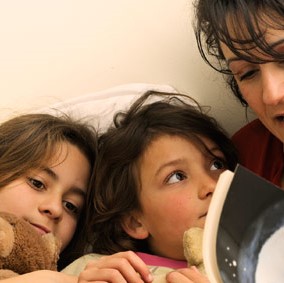The next foundational skill in phonological awareness and language is Sound and Word discrimination.
Auditory or sound discrimination is the ability to recognize similarities and differences between sounds. Mainly, sound discrimination allows people to distinguish between phonemes in words. Phonemes are the smallest units of sound in any given language. Sound discrimination allows someone to tell the difference between words and sounds that are similar and words and sounds that are different.
A child who has trouble with sound discrimination may have difficulty telling the difference between words such as “sister” and “sitter” or “cat” and “cot.” Overall, the children can’t distinguish between the slight differences in the sounds of words.
This problem can sometimes make it hard for children to understand what people are saying. This is exacerbated in noisy environments such as classrooms or even a child’s home if they belong to a large family or have loud music and television.
Sound and word discrimination plays an essential role in both language and reading development. To achieve literacy, children must have phonemic awareness; difficulties with auditory discrimination can challenge young readers.
If a child were reading a book or passage that included something about bees, they should notice that the word “bees” has three sounds “b,” “ee,” and “ZZ.”
The different levels of Mastery we look for in Sound and Word Discrimination
Level 1 – Discriminating sounds in the environment
The most basic level of auditory discrimination is hearing the difference between sounds in our environment, e.g., identifying the sound of a car passing, the noise of a fan turning, etc. The children should progress to identifying more closely linked sounds, e.g., different people’s voices or the difference between a car and a truck.
Level 2 – Discriminating between different words in speech
Once children can identify sounds in their environment, they are ready to move on to the next level of auditory discrimination. These first two levels should be set in KG, but can also be addressed in Lower Primary. Children become aware that speech is made up of individual words. They develop this skill through rhyme and rhythm activities when they clap, tap and stamp the rhythm of various rhymes.
Many activities you can do to develop these skills are quick, fun, and active to keep the children motivated and alert.
Level 3 – Discriminating syllables in words
Children first become aware that a sentence consists of individual words:
The children listen to their teacher quietly.
Seven words make up this sentence.
The chil-dren list-en to their tea-cher qui-et-ly.
The sentence is now segmented into twelve individual syllables. The word teacher has two syllables: tea-cher. The word quietly has three syllables: qui-et-ly.
Level 4 – Discriminating rhyming words
The skill of hearing rhyming words is a crucial step towards being able to blend words. The child should give words that rhyme e.g. for cat, give sat, mat, hat, rat etc. If you give them a list of words like sun, run, hat, fun they should be able to spot the odd one out (hat). When teaching them about rhyme you can include playing with non-words e.g. lat, dat, gat as rhymes for cat.
Level 5 – Discriminating individual sounds in words
We want the children to identify individual sounds in words. Then the child can read words through blending and segmenting. The child can identify that bag is made up of three individual sounds –
/b/ /a/ /g/ – blended together.
Children progress naturally through the early stages. For instance, parents rarely intentionally teach their children the sound made by a car or a fan – they learn it just from being exposed to sounds. But some children do need guidance from their teachers and parents to reach the higher levels of auditory discrimination.


